RARE WWII 1944 D-Day Operation Dragoon FRENCH COMMANDOS Amphibious Invasion Beach Assault Map
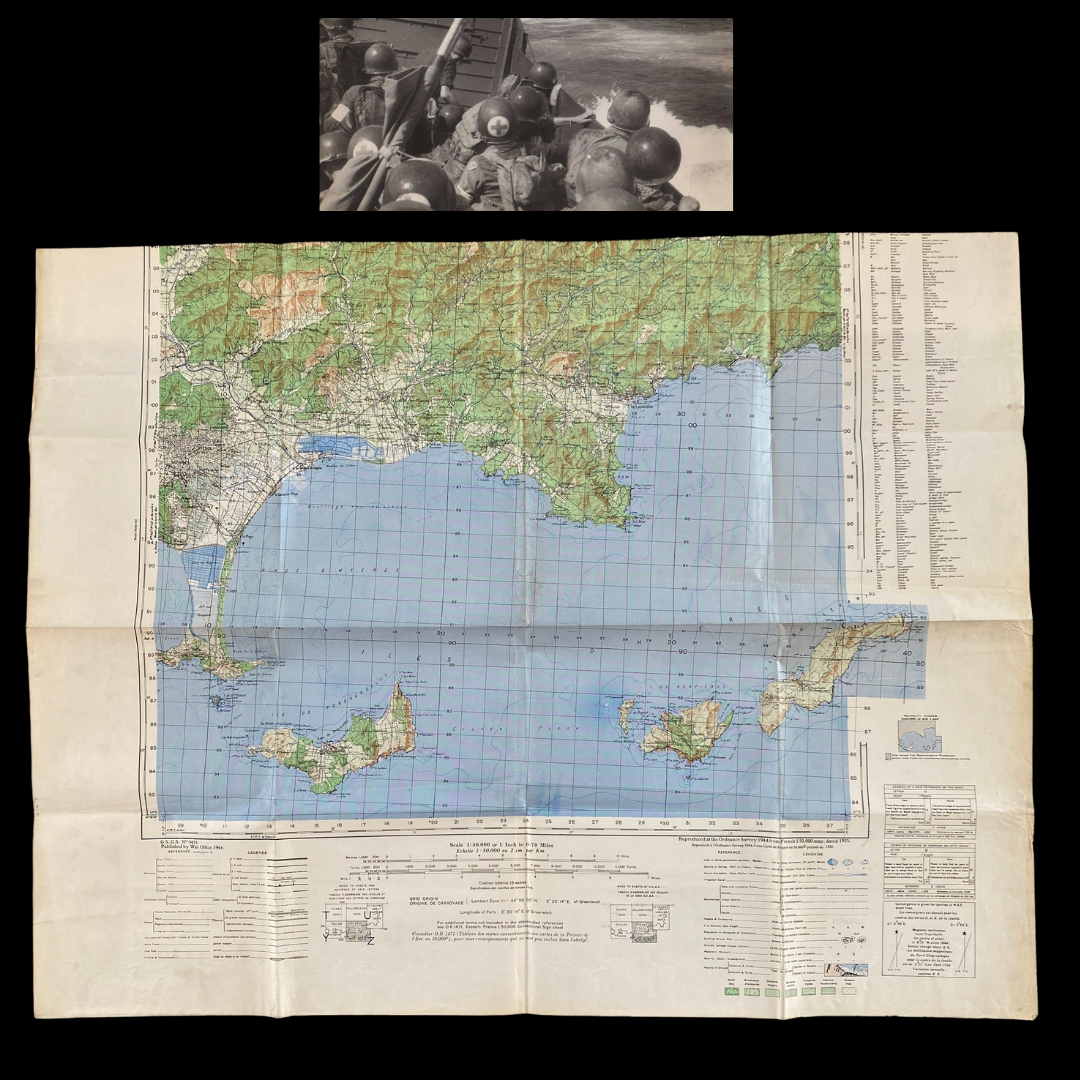



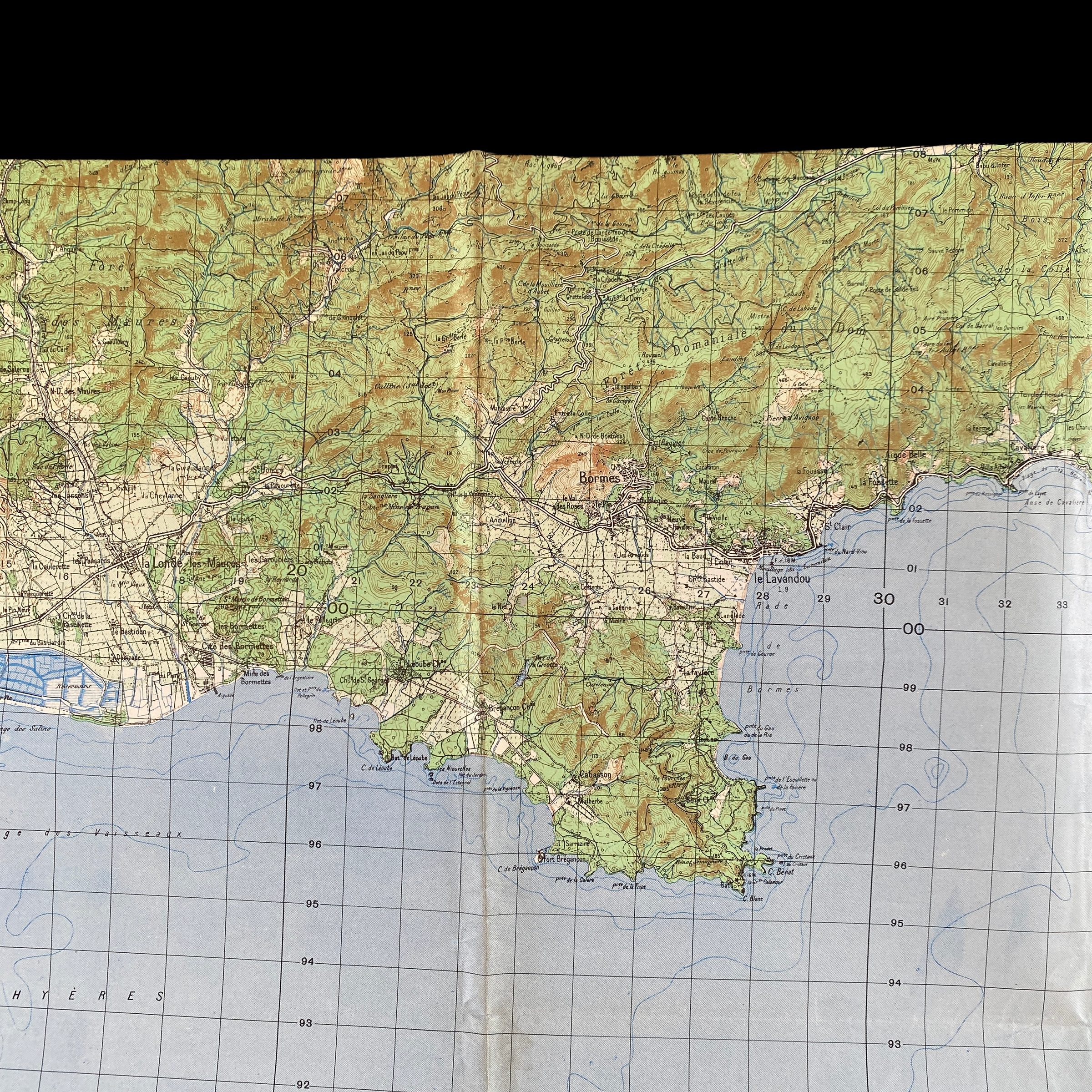
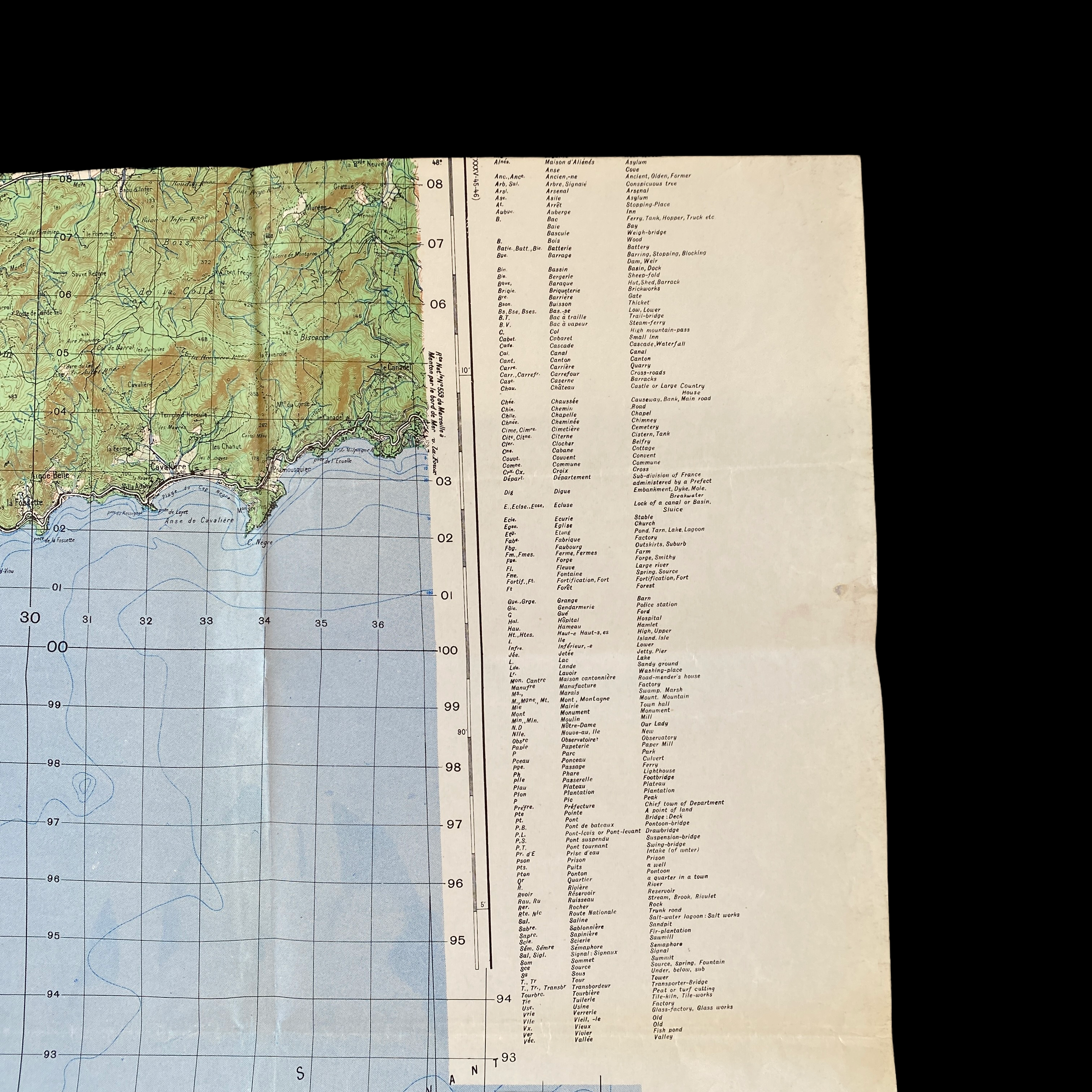
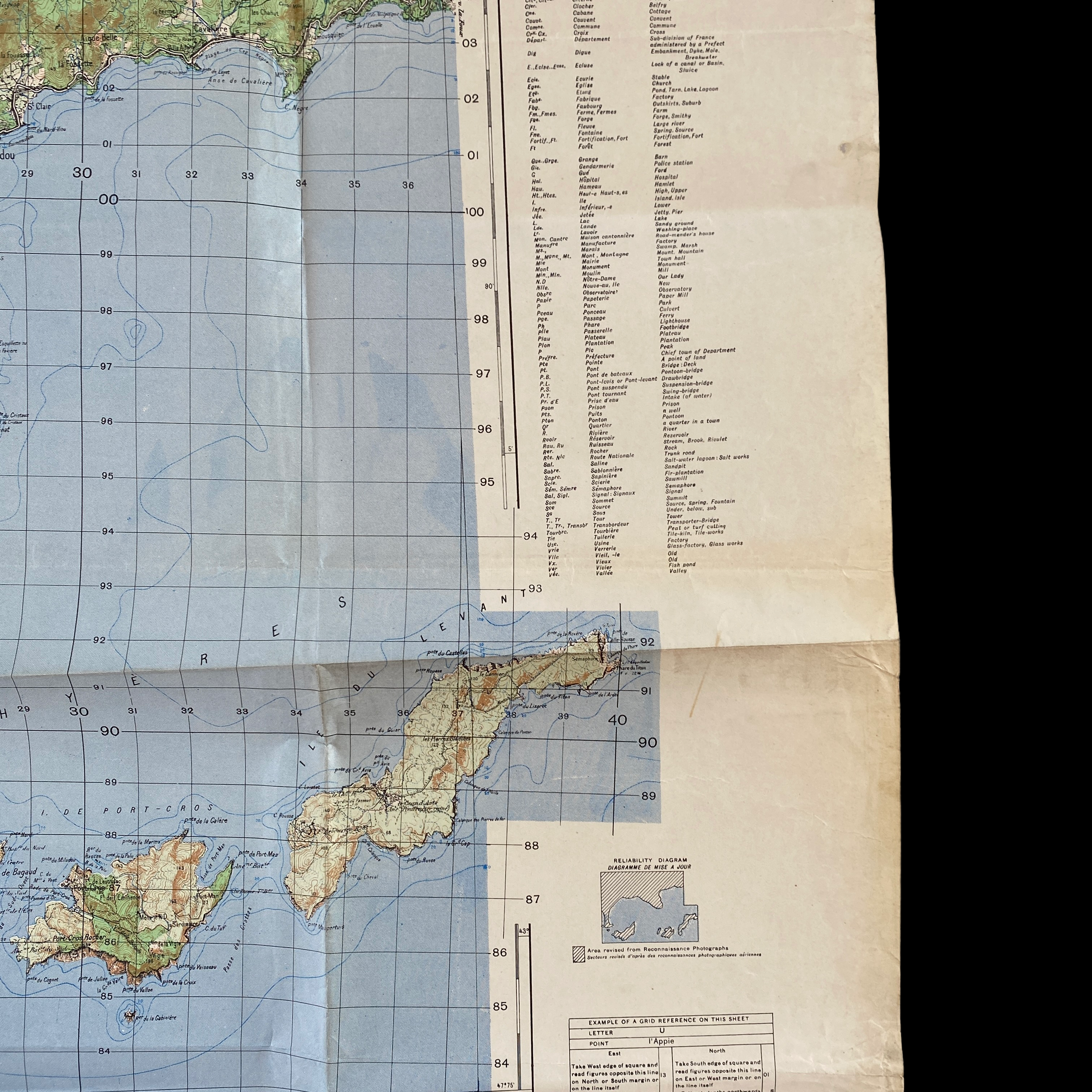
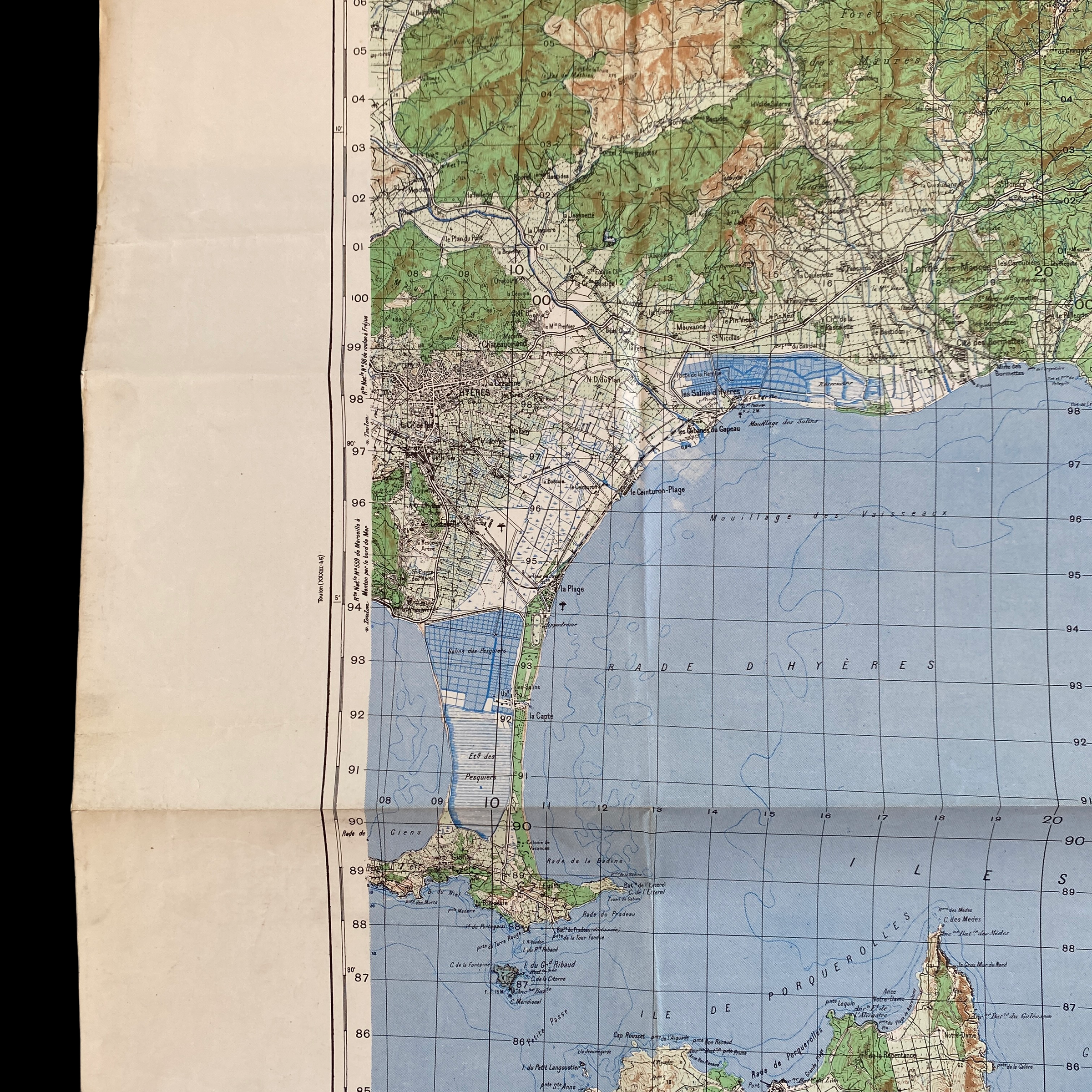







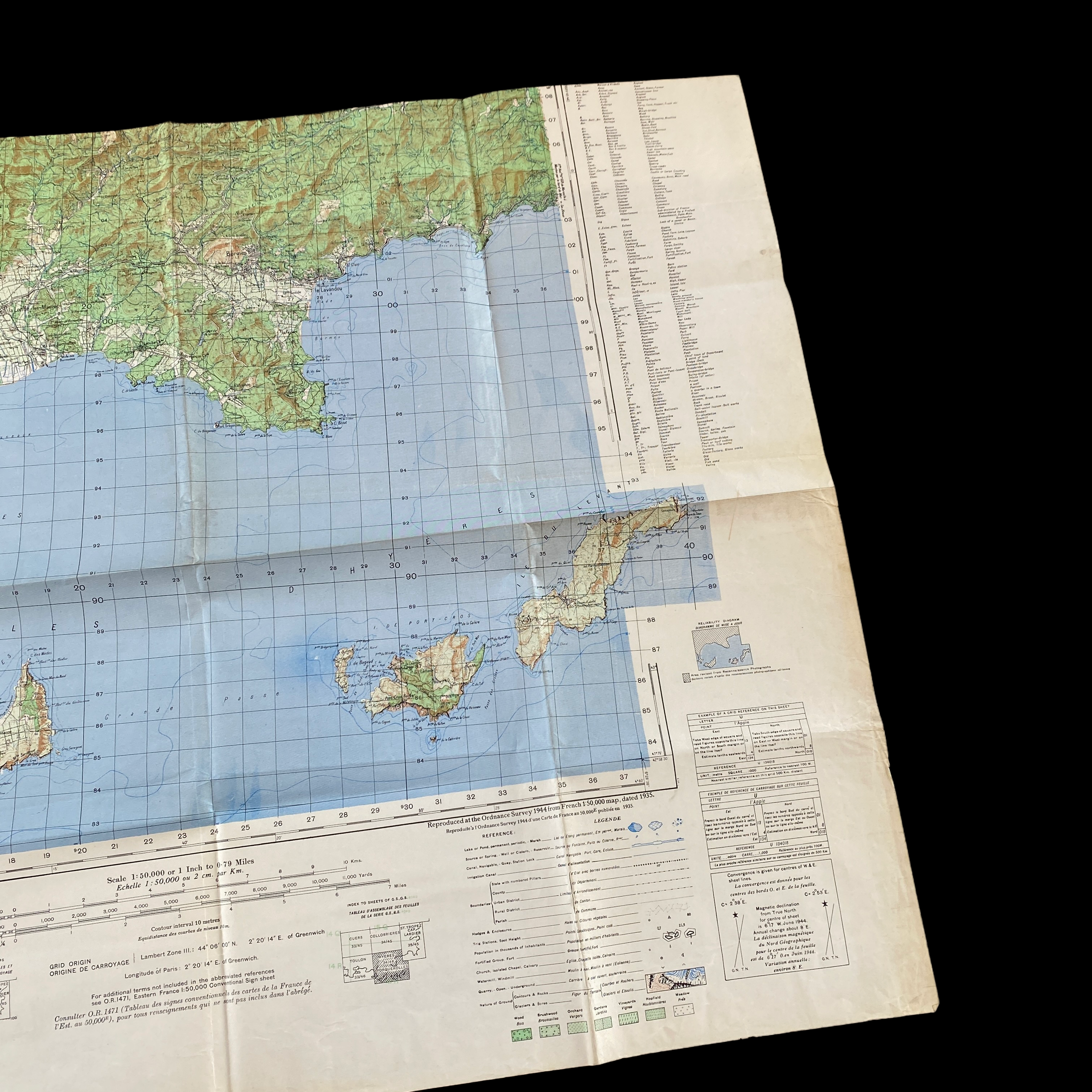
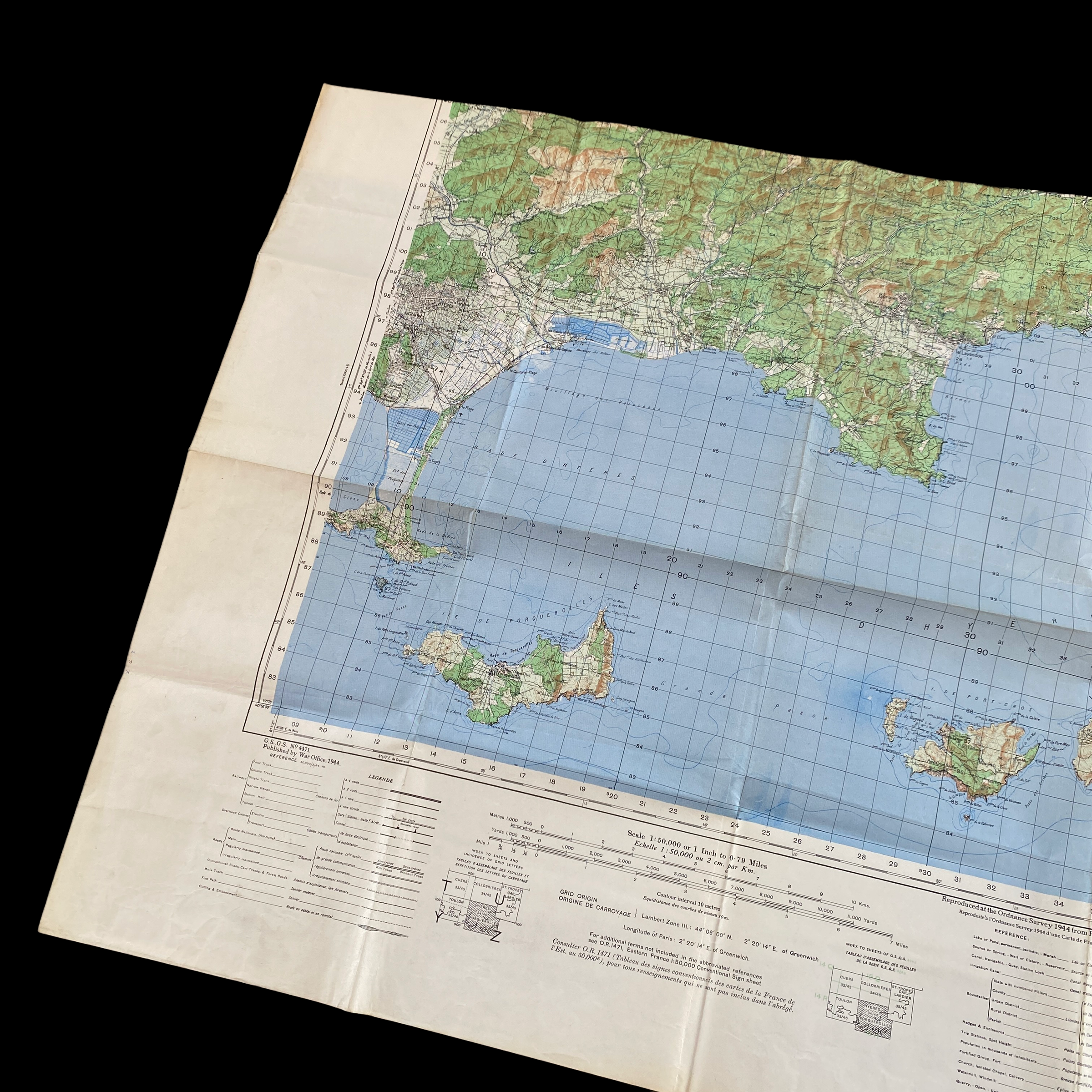















RARE WWII 1944 D-Day Operation Dragoon FRENCH COMMANDOS Amphibious Invasion Beach Assault Map
Comes with hand-signed C.O.A.
The original plans for the 1944 Allied invasion of Europe called for two massive invasions of France. The first, Operation Overlord, in Normandy, was the D-Day so familiar to the world. The second would be an “anvil” on which the Overlord “hammer” would resound, in the south of France, trapping the German war machine between the two massive invasions.
The Luftwaffe had 186 airplanes, and the Kriegsmarine could respond to invasion with 28 torpedo boats, nine submarines, five destroyers, and 15 patrol craft. Neither would be useful against the 300,000 men, 2,000 warplanes, and hundreds of ships that German intelligence estimated would hit southern France.
This incredible rare 1944 WWII combat operations map was used by infantry and armored divisions during the infamous D-Day landings of southern France during Operation Dragoon. This very rare map was one of the only map series to be printed with ENGLISH (TOP) and FRENCH (BOTTOM) translations…why? These were meant to be used by the French and U.S. invasion forces.
***This amazing map shows were the French commandos landed with their PT Boats in the cover of darkness to signal to the waiting invasion force just off the shore.
Two advance teams of nine French commandos each were towed in rubber dinghies by PT boats to within 1,000 yards of shore. Their goal was the stretch of beach between Rayol and Cavalaire, from which they would signal with a green light to show the main body where to land. Released from the towing boats, they silently paddled their rubber boats to the beach. Unfortunately, navigation errors put each group about a mile distant from its intended landing site. It cost valuable time to reach the intended beaches just east of Cap Nègre. This rocky outcropping was the site of three German costal defense guns. Groping in the dark, the first group at last found the right beach, but at the critical moment the batteries of their flashlights went dead and no signal could be sent. The other group of nine landed at the base of Cap Nègre. The group leader, Master Sergeant Noel Texier, decided to change his mission. He would scale the heights with his eight men and capture the guns himself. But the Germans had been alerted, and a shower of hand grenades killed Texier and pinned down his men on the cliff.
At sea, the main body of commandos could not see any green lights to signal their landing sites. But the invasion could not wait. The next party, in two landing craft of 30 men each, was assigned to knock out the German guns on Cap Nègre. With no green lights from shore to guide them, they headed toward the wrong beach. The captain of the first boat saw in the darkness that they were not at a rocky shore and turned back out to sea.
The second boat, however, landed its men, who stormed the heights and knocked out the two guns they found (the reported third gun was not located). Despite the mishaps, the French now had a toehold on their beloved homeland.
While the diversionary raids were taking place and naval preparations were being made for a beach landing, the paratroopers of Frederick’s First Airborne Task Force boarded their C-47s at their bases in Italy, each man with a 70-pound pack of personal and company gear on his back, for an operation codenamed Rugby.
France’s Second D-Day: Operation Dragoon and the Invasion of Southern France:
Often overshadowed by the Normandy Landings, the U.S. Seventh Army’s amphibious invasion of southern France on August 15, 1944 and the ensuing operations were nonetheless critical to the Allied victory in the European theater of World War II. Following six weeks of aerial bombardment, the infantry, armor, airborne, and commando forces of Maj. Gen. Lucian Truscott’s VI Corps assaulted German positions along a 45-mile stretch of French coastline from St. Raphaël to St. Tropez. Preceded by the commandos of the 1st Special Service Force and the paratroopers of the 1st Airborne Task Force, the assault battalions of the 3rd, 36th and 45th infantry divisions landed on the French Riviera. The American forces secured the beachhead and pushed inland, dislodging the defenders of the German 19th Army. Within 48 hours, American units penetrated 20 miles in some sectors. The VI Corps then turned west toward the Rhône River valley. Meanwhile, the French Armée B came ashore over the landing beaches. The Free French forces, under the command of Gen. Jean de Lattre de Tassigny, had the primary objective of the campaign – to capture the ports of Toulon and Marseille. Together, these French and American units formed the Seventh Army under the command of Lt. Gen. Alexander M. Patch.
The combined Franco-American force continued its assault toward Marseille and the Rhône River, forcing the German Nineteenth Army into a fighting withdrawal. As the French prepared their attack on Marseille, the Americans turned north up the Rhône Valley. One hundred miles north of Marseille, the town of Montélimar presented a major obstacle; the Germans prepared their defense as a bottleneck to slow down the rapid Allied advance. After a fierce struggle, the 36th Division forced the German units to withdraw, Montélimar fell, and the rout was on. The campaign became a race northward up the Rhône valley.
By September 7, a combat patrol made contact with the French 2nd Armored Division operating west of Dijon. The French, in collaboration with Lt. Gen. George Patton’s U.S. Third Army, were advancing east toward the border with Germany. With the full link up of Allied armies completed by September 10, the Seventh Army turned northeast toward Strasbourg. The drive to the German frontier began, and Operation Dragoon ended. Over the course of the offensive, the Allies drove 400 miles into France in three weeks and liberated 10,000 square miles of French territory while inflicting 143,250 German casualties. Although launched with reluctant British participation, the campaign through southern France provided crucial support to the main Allied thrust against Germany, and remains one of the most successful–and often overlooked–operations of World War II.